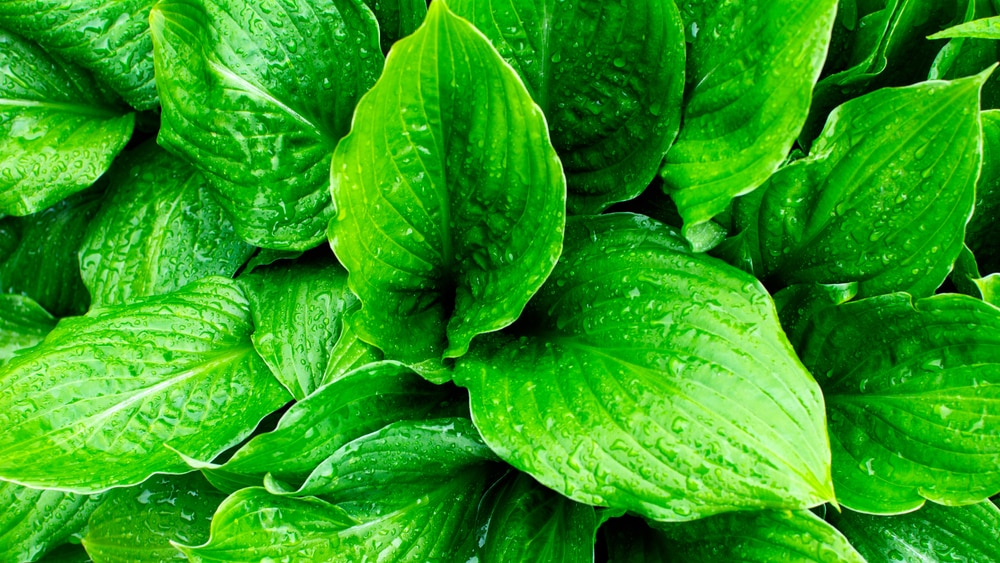Hostas are a popular foliage plant, known for their wide variety of leaf shapes, sizes, and colors. They are an excellent choice for shady areas and combine beautifully with other shade-loving plants. However, hostas do have one common problem – holes chewed in the leaves. These unsightly holes can ruin the beauty of hosta plants. Fortunately, with some knowledge and effort, you can prevent holes in hosta leaves.
What Causes Holes in Hosta Leaves?
There are several culprits that may be responsible for the holes in hosta leaves
Slugs
Slugs are the most common cause of holes in hostas. They use their raspy tongues to chew irregular holes of various sizes anywhere on the leaves, including right through the veins. Slugs feed at night and during cool, wet weather. The slime trails they leave behind are a telltale sign of their presence.
Earwigs
Earwigs chew small holes between leaf veins usually near the edges and tips of leaves. They feed at night and hide out in cool moist areas during the day. Turning over pots or debris near damaged hostas may reveal earwigs.
Insects
Other chewing insects, like grasshoppers, caterpillars, or Japanese beetles, may also be responsible for holes in hostas. They tend to skeletonize leaves between veins. Pay attention to when damage occurs to identify the culprit. For example, Japanese beetles emerge in mid-summer.
Rodents
Rodents like voles and mice may nibble on hosta leaves and roots. Damage is usually near the base of the plant. Look for small teeth marks around remaining leaf edges.
Environmental Factors
Physical damage to leaves can mimic pest damage. Hail, falling debris, or string trimmers can put holes in hosta leaves. Look for a pattern to the damage that correlates with weather or lawn care activities.
How to Prevent Holes in Hostas
Once you’ve identified what is causing holes in your hostas, you can take steps to prevent further damage:
Remove Hiding Spots
Eliminate moist, shaded areas around hostas where slugs and earwigs like to hide during the day Remove weeds, leaves, and debris near plants. Spread Sluggo or diatomaceous earth around hostas to deter pests
Set Out Traps
Traps can help control slugs, earwigs, and other pests. Try beer-baited traps, egg cartons, or moist cardboard for traps. Check traps daily and dispose of captured pests.
Use Physical Barriers
Copper tape around pots or hosta crowns can block slugs. Upturned pots atop pebbles can protect individual plants. Row covers or netting may exclude larger pests.
Apply Slug Baits or Insecticides
Iron phosphate baits like Sluggo are safe for pets and wildlife but lethal to slugs and snails. Insecticidal soaps, neem oil, or spinosad can control earwigs, beetles, and caterpillars. Always follow label directions carefully. Reapply after rain.
Attract Natural Predators
Encourage natural pest predators like birds, frogs, fireflies, and ground beetles by providing water sources, native plants, and hiding spots. Their presence helps keep pest populations down.
Maintain Healthy Soil
Hostas grown in nutrient-rich, well-draining soil are less susceptible to pests. Add compost annually, fertilize according to soil test results, and amend clay soils with organic matter to improve conditions.
Clean Up Fallen Leaves
Remove diseased leaves and any leaves or debris fallen around hostas regularly to eliminate pest habitat. However, leave leaf litter under plants undisturbed as it decomposes to build healthy soil.
Tolerate Some Damage
A few holes won’t seriously harm the overall health of the plant. Consider allowing some superficial cosmetic damage, especially later in the season when plants are mature.
Check Plants Frequently
Frequent inspections allow you to spot problems early while they are still manageable. Check under leaves and pot rims carefully for hiding pests.
Prune Damaged Foliage
Removing heavily damaged leaves eliminates pest habitat and improves appearance. Sterilize pruners between cuts to avoid spreading disease. Avoid overpruning.
Preventive Care for Healthy Hostas
Taking proper care of hostas throughout the season is key to preventing pest problems:
-
Choose pest- and disease-resistant varieties.
-
Site hostas in the proper growing conditions with amended soil and the right sun exposure.
-
Maintain optimal soil moisture. Avoid overwatering.
-
Apply a balanced organic fertilizer early in the growing season.
-
Prune out diseased or dying leaves and dispose of debris immediately.
-
Divide crowded clumps every 3-5 years in early spring to improve vigor.
-
Cut back hosta leaves and stems to the ground after hard frosts in fall.
Holes in the leaves can damage the ornamental value of hostas. With persistence and an integrated approach, you can protect your hostas from slugs, earwigs, insect pests, rodents, and other causes of holes in leaves. Remove hiding spots, set traps, use barriers and baits, enlist natural predators, and promote plant health through proper care and maintenance. Paying close attention to when and how damage appears will help you identify the culprits. Address problems promptly and repeat control methods to prevent additional holes in leaves. With some effort, you can enjoy the beauty of lush, unblemished hosta foliage.
Holes in Hosta
FAQ
How do you get rid of holes in hostas?
How do I protect my hostas from being eaten?
How do I keep pill bugs from eating my hostas?
Can you spray vinegar on hostas?
- The Ultimate Guide to Growing Strawberries in Raised Beds - August 8, 2025
- No-Dig Garden Beds: The Easiest Way to Grow a Beautiful Garden - August 6, 2025
- How to Protect and Preserve Wood for Raised Garden Beds - August 6, 2025

